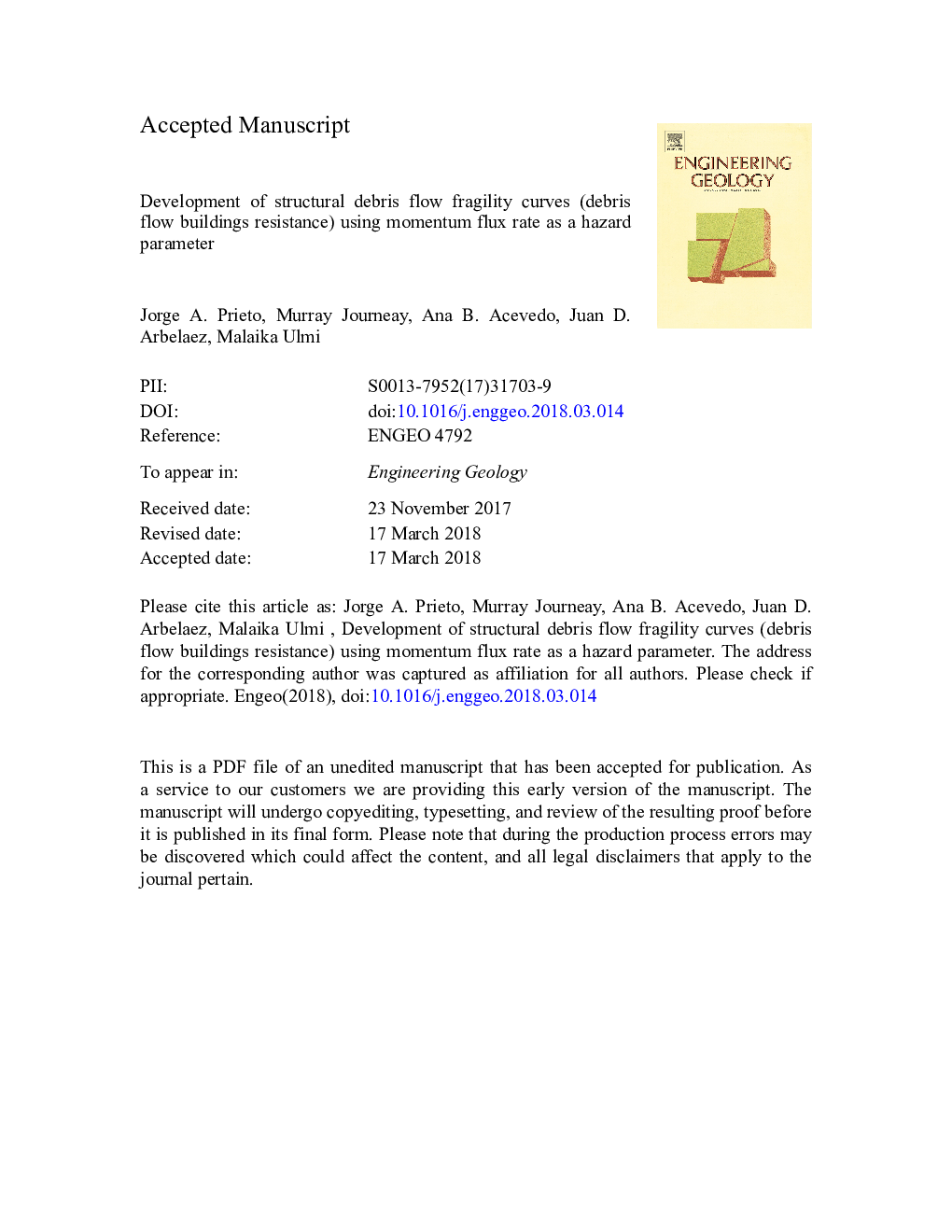| کد مقاله | کد نشریه | سال انتشار | مقاله انگلیسی | نسخه تمام متن |
|---|---|---|---|---|
| 8915881 | 1641746 | 2018 | 33 صفحه PDF | دانلود رایگان |
عنوان انگلیسی مقاله ISI
Development of structural debris flow fragility curves (debris flow buildings resistance) using momentum flux rate as a hazard parameter
ترجمه فارسی عنوان
توسعه منحنی شکننده جریان جریان انبساط ساختاری (مقاومت ساختمان ساختمان جریان انبساط) با استفاده از نرخ جریان شتاب به عنوان یک پارامتر خطر
دانلود مقاله + سفارش ترجمه
دانلود مقاله ISI انگلیسی
رایگان برای ایرانیان
کلمات کلیدی
منحنی شکنندگی جریان انباشته، آسیب پذیری جریان انباشته، خطر جاری شدن جاروب، تلفات جریان انباشته شده، ریسک جریان انباشته، مقاومت در برابر انبساط جریان،
موضوعات مرتبط
مهندسی و علوم پایه
علوم زمین و سیارات
مهندسی ژئوتکنیک و زمین شناسی مهندسی
چکیده انگلیسی
Hazard level includes a hydrodynamic force variable (FDF), which accounts for the combined effects of debris flow depth and velocity, i.e. momentum flux (hv2), material density (Ï) and related flow characteristics including drag (Cd) and impact coefficient (Kd). Building performance is measured in terms of yield strength (Ay), ultimate lateral capacity (AU) and weight to breadth ratios (W/B) defined for a portfolio building types that are common in mountain settlements. Collectively, these model parameters are combined using probabilistic methods to produce building-specific fragility functions that describe the probability of reaching or exceeding successive thresholds of structural damage over a range of hazard intensity values, expressed in terms of momentum flux. Validation of the proposed fragility model is based on a comparison between model outputs and observed cause-effect relationships for recent debris flow events in South Korea and in Colombia. Debris flow impact momentum fluxes, capable of resulting in complete damage to unreinforced masonry buildings (URM) in those regions are estimated to be on the order of 24â¯m3/s2, consistent with field-based observations. Results of our study offer additional capabilities for assessing risks associated with urban growth and development in areas exposed to debris flow hazards.
ناشر
Database: Elsevier - ScienceDirect (ساینس دایرکت)
Journal: Engineering Geology - Volume 239, 18 May 2018, Pages 144-157
Journal: Engineering Geology - Volume 239, 18 May 2018, Pages 144-157
نویسندگان
Jorge A. Prieto, Murray Journeay, Ana B. Acevedo, Juan D. Arbelaez, Malaika Ulmi,
